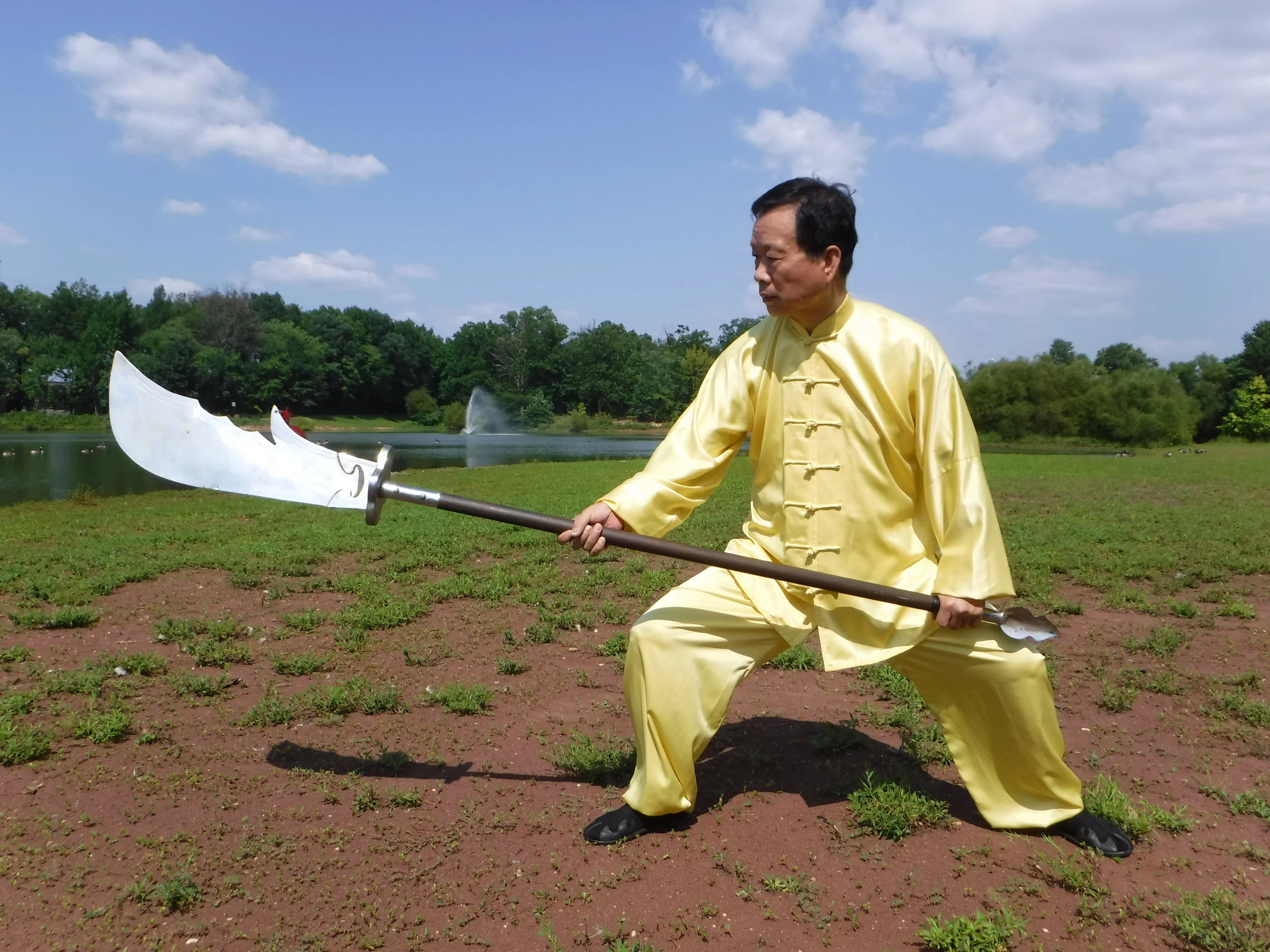太極拳
What is Taiji?
Taijiquan (T’ai Chi Ch’uan) 太極拳 is one of the great Chinese internal martial arts, today practiced as commonly for its health preservation benefits as its self-defense applications. Because of the way Chinese language is Romanized into western languages, the word can be written a number of ways. Sometimes it is simply called Taiji for short, and this can also be spelled T’ai Chi. Many westerners however don’t realize that no matter how it is spelled it is pronounced the same in Chinese. Thus T’ai Chi was never pronounced with a “ch” sound, but rather with a “j” sound.
The word Taiji 太極 is derived from Chinese philosophy and means the interplay of Yin and Yang. The second part of the word, “quan,” or “ch’uan,” (拳) means fist, showing the original martial arts origin of the practice.
In popular culture the origin of Taiji is usually surrounded in pure fantasy. There are legends about Taiji being developed by Daoists high atop Wu Dang Mountain, or being developed by Zhang Sanfeng, one of the Immortals who lived in that same mountain range. However, these origin stories are developments of, at the earliest, the end of the 19th century and are nothing more than fantasy sometimes fueled by western Orientalism.
The real story of Taiji’s creation is more mundane. It was originally created as a martial art having been developed by the retired Ming Dynasty military general Chen Wangting (1580-1660). Once retired from the military Chen also worked providing security to merchant caravans as they traveled through bandit-infested parts of China. While in the military Chen had training in various weapons, in empty hand techniques such as wrestling, and in military strategy. As a soldier he had the opportunity to use his acquired skills in real life-or-death situations. In retirement, Chen took these techniques home with him to the rest of his extended family.
It seems clear that the empty-hand martial arts Chen practiced and taught were influenced by the popular military writings and teachings of Qi Jiguang, another Ming Dynasty general. In the original Chen style Taiji the practice of slow empty hand forms that most people associated with Taiji practice was just one, and perhaps the most basic of training methods (albeit a fundamental one). In addition there were, and still are, fast forms that require much more strength and agility (the Cannon Fist forms 炮捶), short weapons forms (straight sword 劍 and broad sword 刀), long weapons forms (the spear 槍), and even heavy military weapons forms (the halberd 大刀, the 9 foot long infantry spear 大杆/大槍, and the heavy mace 鐧). After solo practice, there were partnered practice routines as well as grappling and joint mobilization techniques.
Aside from the physical and practical self-defense skills in the system, Chen also blended his martial arts routines with breathing and visualization practices such as Dao-yin 導引 and Neidan 內丹 / Neigong 內功, the forerunners of modern Qigong. These types of exercises as aids in staving off disease and encouraging longevity were quite popular among the literate elite of the Ming and Qing Dynasties. The combination of martial arts practice with self-cultivation created a practice that was useful on many levels, and for many years as a person’s training goals changed over time. This is not something that would have been unusual in Chen's day, and he was not alone in doing so. Even the famous Shaolin monks were doing the same, and starting to practice martial arts for both health and spiritual development.
Some Taiji Practices
Taolu (套路) - Forms
One mainstay of Taiji is the practice of solo forms. These are movements practiced in strings of various length depending on the system. In Taiji, the fundamental forms are practiced slowly, although in classical Taiji there is always a mix of slow and fast movements in forms. Also, in classical Taiji, there are faster forms in addition to the slower ones.
Weapons (兵器)
Since Taiji was originally derived from military practice, it naturally contained weapons forms. Traditional Taiji weapons include various swords, spears of different length, halberds, poles, and others.
Chan Si Gong (纏絲功) - Silk Reeling
Silk reeling are types of foundational exercises that increase flexibility and strength of the joints and connective tissues. Even used alone they are incredibly useful for health preservation.
Jiben Gong (基本功) - Foundation Exercises
Various foundational exercises supplement Taiji practice. These increase body strength and flexibility, and include, for example, the use of heavy long poles, weighted balls (Taiji balls), and the practice of single exercises as opposed to forms as strings of movement.
Neigong (內功) - Internal Exercises
Taiji practice includes a variety of Neigong, or internal cultivation exercises. Please see our section on Neigong for more information.
Tui Shou (推手) - Push Hands
All martial arts need partnered practices. In Taiji, Push Hands are practices done with someone else that test balance and sensitivity to movement.
San Shou (散手) - Applications
San Shou is the partnered practice of using Taiji movements for self-defense application.










